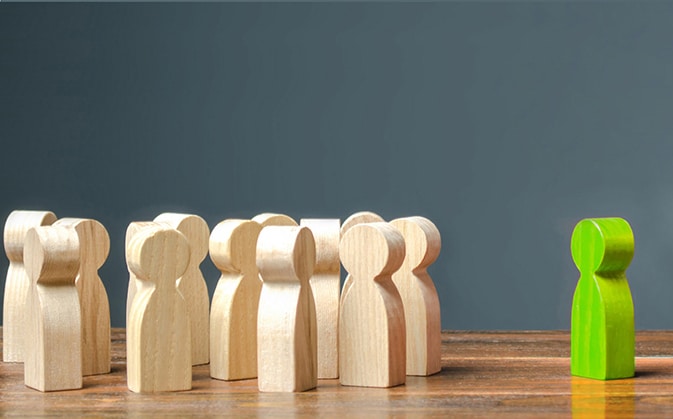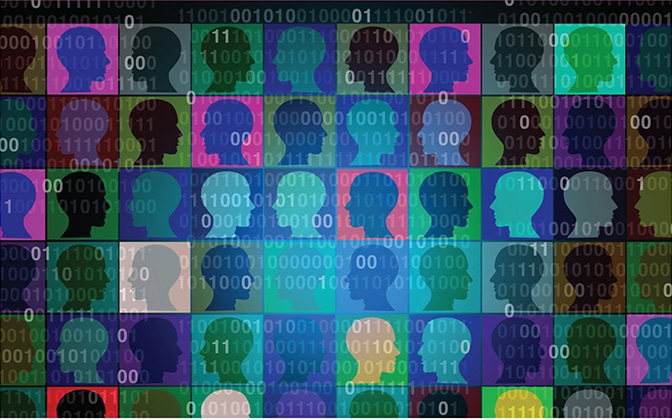
I Screen, You Screen, We All Screen for…Data?
January 28, 2020
Communication: Better Leadership
June 3, 2020By Rona Milch Novick, PhD
When the coronavirus crisis forced school buildings to close, remarkable flexibility and innovation allowed for a proliferation of models and methods to keep students’ academic knowledge and skills growing. As it has become clear that these measures will be necessary for the remainder of this school year, and that a full return to school as usual may not be possible even for the fall, the question arises as to where efforts should best be directed. Schools and agencies are wisely devoting time and attention to improving on-line instruction. School has always, however, provided much more than instruction in particular content areas. School has also been a place for social-emotional learning, for developing and practicing social skills, and for making and engaging in friendships. This critical component of education may have, by necessity, received insufficient attention as the rapid closing of school buildings shifted how we teach. It is time that we broaden our focus to ensure our learners, whether in school buildings, or learning at home, master the important life skills that will allow them to succeed socially as well as academically.
In a typical school situation, social-emotional learning (SEL) occurs through three vehicles: formal lessons, informal structures, and embedding SEL in academic lessons. I would like to explore how each of these vehicles have been impacted and offer some suggestions for the current reality and as we look forward.
Formal Social-emotional Learning
If we consider how formal social skill and social-emotional lessons could be adapted for on-line learning, we might discover there are advantages to leveraging technology platforms. A list of commercially available materials are briefly described at https://www.commonsense.org/education/top-picks/emotional-intelligence-apps-and-games, and there are interactive videos available at www.stopbullying.gov. Many materials are free, and some offer the additional advantage of allowing students to work at their own pace to build skills. Interspersing social skills games or other similar non-academic content with academic sessions might ameliorate the Zoom fatigue that is being noted, as well as providing important learning for students. However, schools and teachers overwhelmed with planning academic curricula and its delivery may be less likely than ever to find the time for reviewing, developing and delivering social-emotional lessons.
An additional challenge comes from the mistaken belief, sometimes promoted by administration, sometimes held by teachers, that teachers teach a specific academic subject. Teachers teach students. Prioritizing content over promoting social-emotional growth of learners would make sense if you wanted the smartest computer algorithm. If we want healthy, well-adjusted, and well-related mentschen who will populate our shuls and communities, then we need educators who appreciate and embrace the responsibility to teach SEL as well as whatever subject is their domain. However, educators’ passion will not be enough. As schools consider their faculty’s professional development needs, inclusion of material that provides teachers with the skills and resources to be agents of social growth should be included. Of course, an additional piece of the solution requires that parents, as the consumers who pay for the Jewish educational product, understand and appreciate the centrality of social-emotional learning to their children’s life success.
Informal Structures
When students are together in the school building, there are myriad ways that the structure of the typical school day allows for and promotes socialization. There are informal hallway conversations, recess pick-up games, and lunch table and pre-bell conversations, either amongst students or between students and teachers. To a very large extent, these are not present in the current digital learning environment. There are very limited, if any, opportunities for schmoozing, one-on-one. If a teacher wants to speak with a student or a small group, it must be arranged. There are no casual opportunities to connect. Students, too, have lost these “touch base” moments, and to a large degree, have been limited to socializing with the people in their home, or digitally with others. For the youngster with limited conversation skills, a “what’s up” in the hallway might have come naturally. Calling someone to chat may be an unsurmountable challenge.
Many teachers have shared that they are routinely un-muting all students for the last 5 minutes of the Zoom classroom to allow some informal connecting. It is unclear how similar such 20-person discussions are to what happens in classrooms and hallways. One ingenious educator posted her social engagement strategy. She has each person in the Zoom classroom “reach out” to touch the students in the “box” next to them – and use the chat function to type a quick hello to those “neighbors”. She repeats whenever the class goes into and returns from Zoom break-out rooms, since students’ position on the screen has shuffled. These smaller discussions, she suggests, build community.
In addition to the informal social touch points discussed above, schools have always promoted students’ socialization through extra-curricular events such as clubs and shabbatonim. In many schools, there are in-school communal celebrations of birthdays and other simchas. To their credit, schools have been remarkably innovative in attempts to recreate these social events, and to engineer new ways to engage students socially. There have been on-line color war breakouts and Zoom-ed Bar and Bat Mitzvahs. For graduation, many schools have arranged teacher drive-bys to graduates’ homes, and there have been car parades for Yom HaAtzmaut and more. All of these attempts are to be congratulated. At the same time, as we approach an unusual summer, and the possibility that we will not all be together without restriction in the fall, we should consider how we guarantee that schools are fostering social connections and helping students develop one of life’s most important tools for dealing with stress or trauma: friendships.
There are ways, even without being physically together, that schools can foster social interaction, but they will take time and effort. One technique is the strategic use of small group work. Strategically thinking about who is grouped together, and how group work is structured to support socialization and friendship development can make it a very powerful socialization tool. Many of the school or class-wide social events and celebrations would be better socialization tools if they were done in small group formats. A virtual pizza night or cupcake baking with 24 of your classmates is too large to allow significant socialization, nor can an educator on Zoom note and intervene regarding particular students’ behavior. Of course, it takes much more time to host 5 small groups than to pull the entire class together. This requires thoughtful curricular planning so that while the teacher works with small groups on a rotation, all other students are working independently or otherwise productively occupied.
Schools traditionally serve as indirect socialization agents through hosting clubs and other events that drive social connections. That has been less the case during this COVID pivot. But schools can still serve a facilitating role if they “host” informal student social gatherings. This need not require extensive faculty engagement, rather it allows use of the adult expertise in coordinating on-line social events, and the school technology platforms to host them. Since many teens and even younger children are quite facile in arranging a Google Hangout with friends, this may seem unnecessary. For those students whose skills in social initiation are more limited and for those less likely to respond to peer invitations than school-issued ones, a school-sponsored program can be very useful. Whether an informal 5th grade boys shmooz with a favorite coach, or a girls get together to talk about STEM careers with a teacher, such school interventions may be very welcomed.
Embedded SEL Lessons
The final avenue through which schools support social-emotional learning is by embedding it in academic lessons. The New Jersey Department of Education, as have many such state departments, has endorsed a robust description of social-emotional competencies and sub-competencies. (It is available here.) The five competencies include self-awareness, self-management, social awareness, responsible decision making and relationship skills. Clearly these skills are critical for both academic and social success. Digging down to the sub-competency level the dual academic/social implication is even clearer. For example, recognizing one’s personal traits, strengths, and limitations under the self-awareness heading, and identify and apply ways to persevere and overcome difficulties under the self-regulation heading have obvious implications for academic work. To the extent that the teaching of meta-cognitive, process strategies is embedded in academic lessons, schools are teaching social skills.
For social-emotional learning to be successfully embedded in curricula, what is taught and how it is taught must be carefully considered. Too often, curricula and the teachers and administrators who design the learning neglect to either directly teach meta-cognitive and process skills, or to ensure that the way lessons will be delivered promotes such skills. Take the example of developing perseverance above. Lessons on the values of mistakes, on re-doing one’s work, opportunities for students to discover their personal obstacles, could advance this skill. It could be facilitated in any subject area, math or mussar, but if it is not taught, highlighted, and reinforced, we cannot expect students to master it. Unfortunately, even in the best of circumstances, and with obvious benefits to academics, many schools have not given these key processes and SEL lessons the time and space in the school day they require in order for them to become ingrained. It is only when professional development supports the growth of teachers’ skills and comfort in this area, and administrative mandates make it a clear priority that we ensure that social-emotional learning receives all the time and attention it needs. As schools adapt to the challenge of teaching in radically different ways, it is difficult to ask teachers and schools to do more, even for such a critical component of Jewish education.
The coronavirus prompted unprecedented changes in Jewish education and how many of these changes will continue as we B”H return to a time of safety for ourselves and our students is unclear. There will surely be discussions and debates about what the Jewish education of the future should look like. One thing should be beyond debate. Jewish education must foster the growth of every aspect of Jewish learners, including their social-emotional well-being.
Rona Novick, PhD, is the Dean of the Azrieli Graduate School of Jewish Education and Administration at Yeshiva University and holds the Raine and Stanley Silverstein Chair in Professional Ethics and Values. She serves as the Co-Educational Director of the Hidden Sparks program which provides consultation and professional development to day schools and Yeshivas. Her children’s book, Mommy, Can You Stop the Rain, is published by Behrmann House, Apples and Honey Press. Contact Dr. Novick at [email protected].

